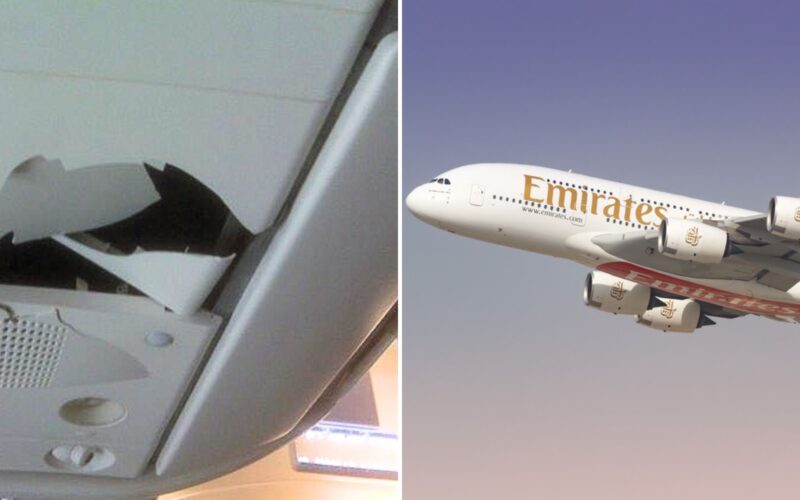Passengers on an Emirates flight from Perth Airport (PER) to Dubai International Airport (DXB) experienced severe turbulence leaving 14 people injured.
The incident occurred on December 4, 2023 on flight EK 421, when the A380 aircraft (with registration A6-EEV), approached the Persian Gulf.
Passengers took to X (formerly Twitter) to recount their horrifying ordeal, with one man saying he “genuinely felt that was the end”, when he hit the aircraft ceiling twice.
A fellow passenger on the flight replied to the man’s post, also sharing a photo from his seat and joking that his cracked ceiling was better.
One passenger even took a photo showing strands of her hair in the crack after she hit her head on the ceiling.
“The pilot announced turbulence and to sit down. Literally a second later, myself and others hit the ceiling. You can see my hair in the crack,” the passenger posted, adding that the crew had been “so supportive” during the incident.
An Emirates spokesperson told Australian media that those injured were assessed and assisted on board by airline crew alongside medically trained passengers who volunteered, and additional medical support provided via satellite link.
The flight continued on to Dubai and was able to land safely at 04:45 local time, and was met by emergency medical crew.
This is not the first time an Emirates A380 has encountered this type of turbulence.
In 2019, another A380 flying from Auckland Airport (AKL) to Dubai met turbulence so severe that the ‘exit’ sign from the aircraft’s ceiling fell and had been part of the chaotic debris from the incident.
A June 2023 study conducted by researchers from the University of Reading in England found that flight turbulence is bound to get stronger due to climate change.
According to the study, warmer air from CO2 emissions is increasing windshear in the jet streams, strengthening clear-air turbulence in flight routes over the United States, Europe, the Middle East, and the South Atlantic.

